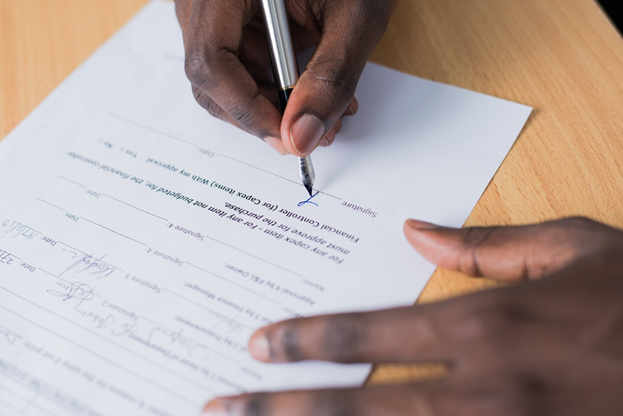Want to expand your business but don’t have enough funds? You can apply for a business loan to get the financial boost you need to kickstart your business growth.
When taking out a loan, you need to make sure you meet the lender’s criteria to prove that you’re capable of paying them back. This means having good credit scores and handing over documents that prove your ability to repay a loan.
Moneylenders in Singapore ask to see several kinds of documents to assess your risk and ability to pay back loans. Preparing these documents early and making sure that your records meet lenders’ expectations and requirements can increase your chances of getting approved.
To make the application process easier for you, we’ve explained the five main documents needed for a business loan in Singapore.
1. ACRA Business Profile Information
The first thing you should prepare is your company’s business profile information from the Accounting and Corporate Regulatory Authority (ACRA). This document shares basic information that verifies your business’s entity. It contains your registration number, entity name, registration date and business activities.
Your ACRA profile also shows the company’s directors and shareholders and paid-up capital. This information helps lenders understand what kind of business you’re operating and determine which director to put down as a guarantor, if necessary.
You can download your ACRA profile here. Note that your Business Profile isn’t a certified copy. If you need a certified Business Profile, purchase a Business Profile with a Certificate of Production.

2. Each Director’s Latest Credit Bureau Singapore Report
The Credit Bureau Singapore (CBS) report shows your company director’s existing loans, repayment histories and outstanding unsecured loan balances. CBS gives their rating of the directors’ general credit. The ratings range from AA to HH, with AA being the highest and HH the lowest.
The lender uses directors’ CBS report to assess your company’s credit risk, which influences your interest rate.
If you recently applied for a credit card, you can get a CBA report for free within 30 days of your application. Otherwise, you can get a copy from CBS for $6.
3. Each Director’s Notice of Assessment (last two years)
Each director must present their personal Notice of Assessment (NOA) over the last two years, not the company’s NOA. This document lists their declared incomes, which banks and financial institutions look at to determine the borrower’s potential loan amount.
The NOA, along with the CBS, gives lenders an idea of your directors’ total debt-to-income ratio. If, for instance, their combined unsecured debts are higher than their income, lenders might be less inclined to grant you the loan. They’ll consider this a risk since the directors might not be capable of repaying a new loan.
Your directors can download their personal NOA from IRAS.
4. Company’s Financial Statements (last two years)
You also need to provide details of your company’s financial activities for the past two years. The business’s financial statements should include balance sheets and profit and loss statements. You can get this from your accounting software or the company’s auditors.
For companies less than two years old, you can show lenders financial statements from your first year.
Banks and lending institutions use your financial records to assess the company’s historical performance and fiscal health. If you’ve been struggling with a huge revenue deficit for months, financiers can take this as a sign that the company is too big a risk to finance.
5. Bank Statements (last six months)
Other than financial statements, lenders will also look at your bank statements. These records show the company’s expenses and revenues, end-of-the-month balance and day-to-day banking activities. Your bank statements also display the company’s cash flow.
Lending organisations use these records to determine if the company can make their payments on time every month. Bank statements also help them gauge how much you can afford to pay each month, enough to make a dent in your debt but not too high that you struggle to pay your installments.
Wrap-Up
These are only the basic documents that banks and financial institutions ask for when you’re applying for a business loan. Some lenders require other documents, such as accounts receivable aging list and income tax return records.
Before you approach any lender, take a look at these documents to gauge your chances of getting approved. This way, you can spot areas that they’re likely to question and you can prepare your answers.
Other than preparing the required documents, it also helps to provide a clear business plan. This shows banks and private financiers that your business has a defined growth trajectory, where and how you plan on using the money and how you intend to repay the debt.

Be the first to comment on "Getting a Business Loan in Singapore? Prepare These 5 Documents"